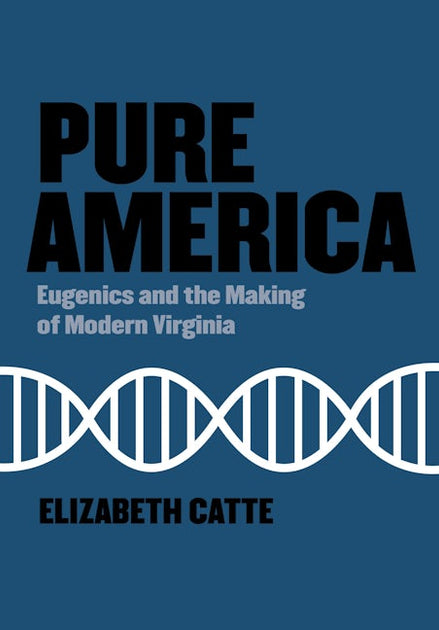Scalawag: Eugenics is "everywhere and nowhere," you write, subject to the tension between the where and what of history. So, to start off: What is eugenics, and where do we find it?
Catte: Eugenics is the practice of engineering human reproduction for the benefit of society—understanding that, in the early 20th century context I write about, "for the benefit of society" largely means white society. More than a scientific philosophy, eugenics in this era took on the characteristics of a social movement and diffused out of the academy and laboratory into law, policy, and even everyday life for millions.
Eugenics can be positive or negative, active or passive. That is, sometimes the goal is to add people to the population, and other times it is to remove them. The means can be direct, like sterilization, or more indirect, like limiting access to health care for certain people. My focus in Pure America is on negative eugenics and Virginia's system for controlling the lives of "unfit" people—who, at this time, are primarily poor, Black, Native, or presumed mixed-race, or disabled people.
Eugenics is a tricky subject in terms of separating past from present, and that's where the "everywhere and nowhere" tension I describe comes from. The logic of eugenics still exists in the belief that some people are born destined to drain society of resources, and that the state should be conservative in helping them survive. At the same time, historical eugenics is a subject that is well-researched, but not often well-remembered by the public. Institutions and communities are reluctant to claim that past as part of their legacies.
For example, I live in a small community in Virginia, which is home to [Western State]. One of our most famous former citizens is a physician named Joseph DeJarnette, a long-serving director of that hospital and one of the most vocal advocates for eugenics in Virginia. But his legacy is largely invisible today, particularly to people without deep community roots. The former hospital campus is now a luxury development that, through historic preservation, tells the story of an earlier era. There are no markers or memorials, no books in the library that speak to this local past. There is a small collection of papers related to the hospital at the local historical society, but to actually understand them, you must read them alongside administrative records held at an archive two hours away.
That's why, in writing Pure America, I focus on the houses that eugenics built—and sometimes they are literal houses. It was my aim to show that far from existing in a remote past, eugenics and the logic of eugenics helped create institutions and assets and landscapes that are still utilized and profited from in the present.
